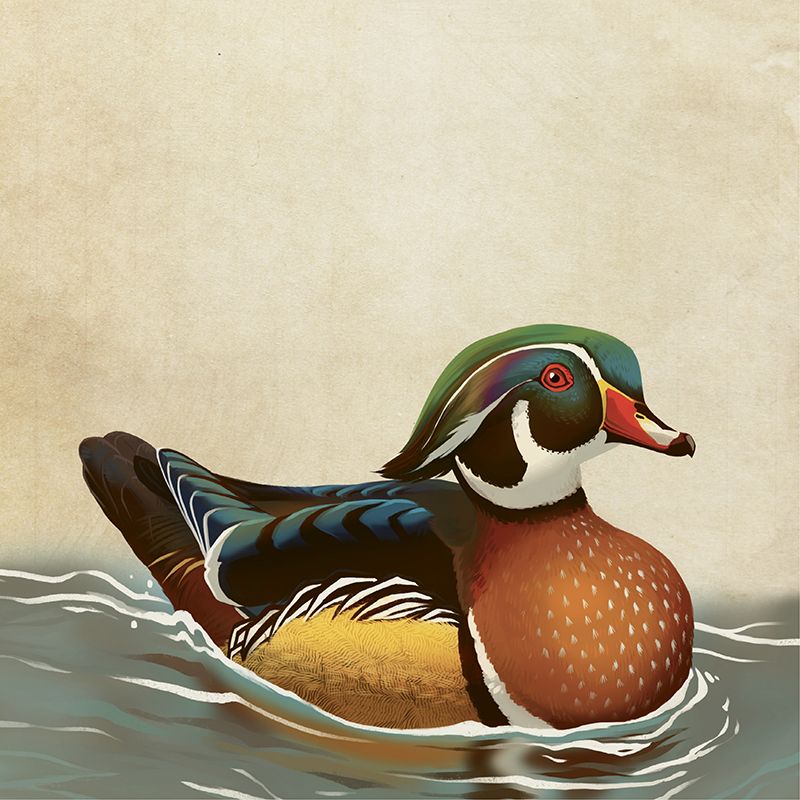Explorer John Lawson—who visited South Carolina in 1700—gives an apt introduction to Aix sponsa, whose nicknames include “wood duck,” “summer duck,” and “Carolina duck.” The creature “has a great topping, is pied and very beautiful,” he wrote. “She builds her nest in a woodpecker’s hole, very often sixty or seventy feet high.” According to the SC Department of Natural Resources, woodpecker holes aren’t chosen as commonly as large cavities in trees near marshes, streams, and ponds, but Lawson is correct nonetheless. Learn more about the native bird, one of only a few waterfowl that spends its entire year in the Palmetto State

Flights of Fancy The male (or “drake”) is the most colorful duck in North America, sporting magnificent plumage in iridescent chestnuts, blues, and greens heightened by bright red eyes. The hen, on the other hand, is mostly grey-brown, with a slightly crested head.
Hungry Duckies These omnivores eat insects as well as nuts, seeds, and berries. In fact, to obtain the nutrients necessary for producing just one egg, a female must consume 75 grams of invertebrates, eating more than 300 bugs an hour for eight hours.
An Early Start Chicks hatch already alert and covered with down. Just one day later, they climb to the opening of the nest cavity, jump to the ground, and head for water. In the 1730s, English naturalist Mark Catesby noted, “While they are young and unable to fly, the Old ones carry them on their Backs from their Nests into the Water; and at the Approach of Danger, they fix with their Bills on the Backs of the Old ones, which fly away with them.”
Fast Track The adept aviators fly swiftly (one study recorded their average speed at 47.1 mph) and can easily wing their way through thickly wooded areas.
Happy Returns Due to the loss of nesting sites and over-hunting, the species was hovering on extinction by the late 1800s. Its numbers began rebounding after the 1918 Migratory Bird Treaty Act granted new protections. Today—with the help of organizations like Ducks Unlimited, the Wood Duck Society, and state Departments of Natural Resources—populations are thriving.
Feathering a Nest Sharp claws allow the birds to climb trees to build their down-lined nests in cavities, away from predators. The wood duck is the only North American waterfowl known to produce two broods in one year; warm Southern temps mean that they start nesting as early as January.
Quacker Boxes In 1937, the organization now known as the US Fish & Wildlife Service built 486 boxes intended for nesting wood ducks. Installed throughout Illinois, they were an instant hit among the hens and would prove to be a vital step in conserving the species.